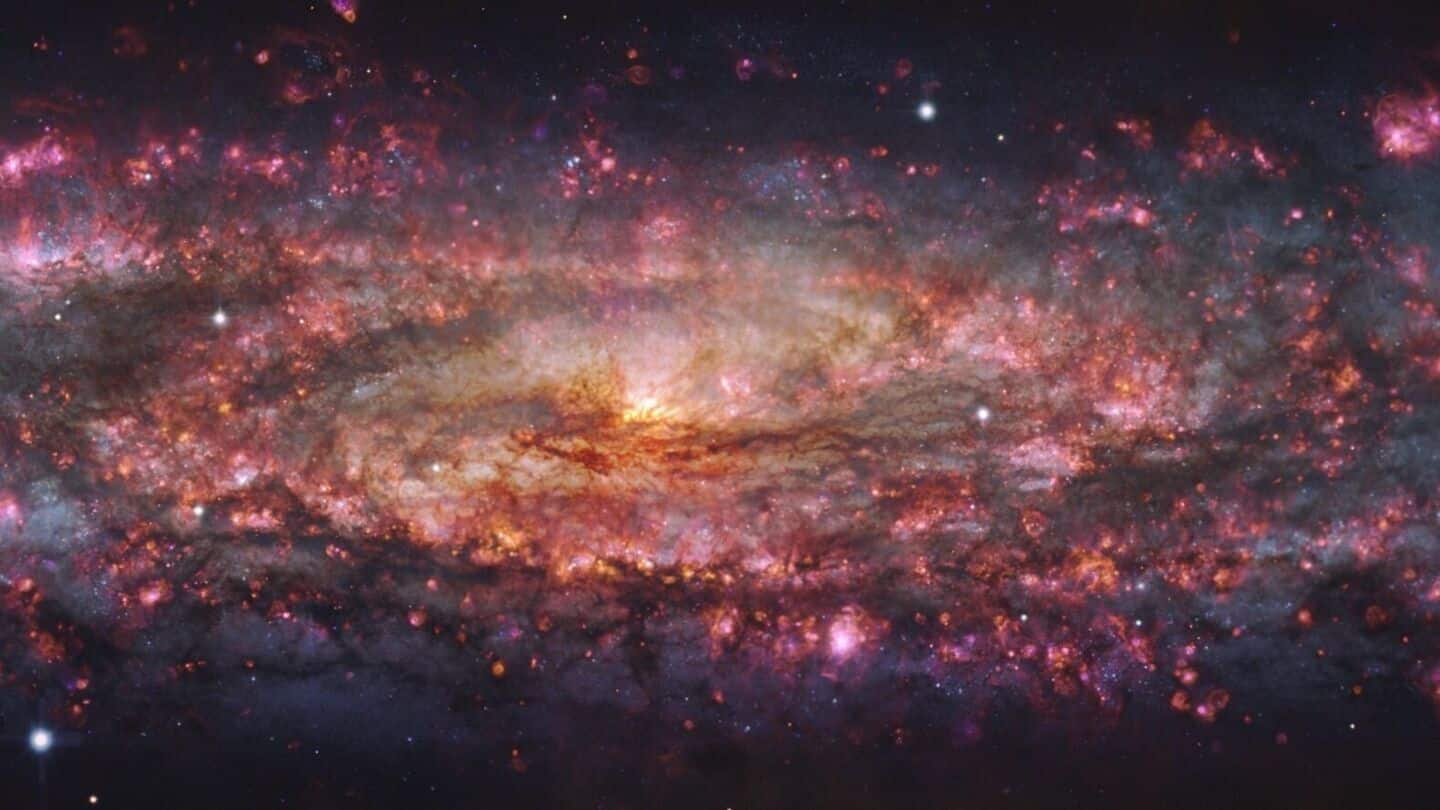
Watch: Astronomers snap a spiral galaxy 65,000 light-years wide
What's the story
Astronomers have unveiled a breathtaking panoramic image of the Sculptor galaxy, also known as NGC 253. The European Southern Observatory's Very Large Telescope in Chile captured this stunning view after nearly 50 hours of observation and over 100 exposures. The resulting image covers an incredible distance of some 65,000 light-years—almost the entire span of the spiral galaxy itself.
Stellar activity
What is the Sculptor galaxy?
The Sculptor galaxy, located 11 million light-years away in the constellation of the same name, is classified as a starburst galaxy due to its intense stellar activity. It can be easily spotted with binoculars or small telescopes. "The Sculptor galaxy is in a sweet spot," said Enrico Congiu from the observatory who led this research project.
Research potential
Why is it an ideal target for astronomical research?
Congiu further explained that the Sculptor galaxy is close enough to allow us to resolve its internal structure and study its building blocks in incredible detail. However, it is also big enough for us to see it as a whole system. This unique combination makes the Sculptor galaxy an ideal target for astronomical research.
Colorful clues
A tapestry of purples, pinks, and yellows
The new image of the Sculptor galaxy is a colorful tapestry of purples, pinks, and yellows. The scientists say that the more colors seen from the stars, gas, and dust in a galaxy, the more information we get about their age, composition, and motion. This image has thousands of colors compared to just a handful in traditional pictures.
Cosmic markers
Why the study is important
The research team has already identified 500 planetary nebulae—clouds of gas and dust from dying stars—in the Sculptor galaxy. These cosmic mile markers can provide further insights into the age and evolution of this distant starburst galaxy. Their findings have been accepted for publication in the journal Astronomy & Astrophysics, marking a significant contribution to our understanding of the universe.